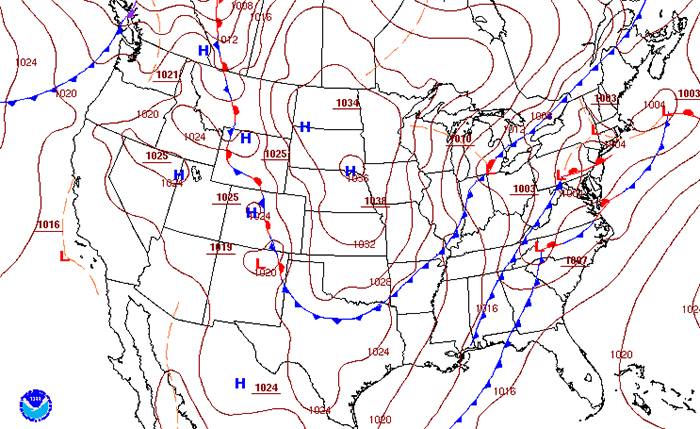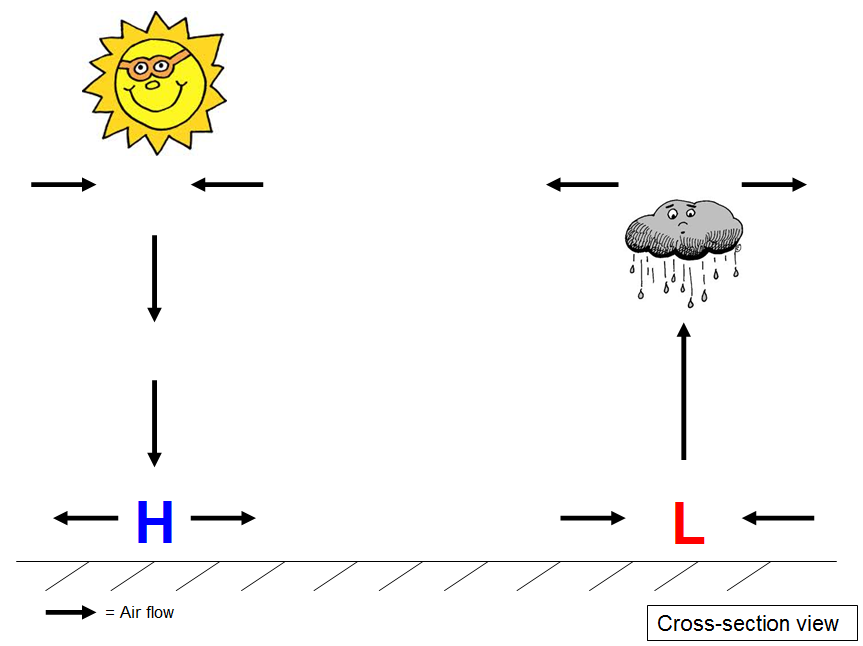

If you are a regular viewer of weather broadcasts, chances are you’ve heard the following from your local TV meteorologist: “plenty of sunshine is in store today as high pressure is in control over the area.” Or: “expect rain to spread into the area as a low pressure system approaches.” It is well established that high pressure is generally associated with nice weather, while low pressure is generally associated with cloudy, rainy, or snowy weather. But have you ever wondered why??

In order to understand the types of weather conditions generally associated with high and low pressure systems, we must think “vertically.” The motion of air in the atmosphere above our heads plays a large part in the weather we experience here at earth’s surface. Basically, air cools as it rises, which can cause water vapor in the air to condense into liquid water droplets, sometimes forming clouds and precipitation. On the other hand, sinking air is associated with warming and drying conditions. So the first important point to keep in mind is rising air = moistening, sinking air = drying.
So what does this have to do with high and low pressure? Well, high pressure is associated with sinking air, and low pressure is associated with rising air. But why? The answer has to do with the typical air flow around high and low pressure. Physically, it seems to make sense to have air flow from high pressure to low pressure. For reasons I won’t get into in this post, the airflow (due to the Earth’s rotation and friction) is directed slightly inward toward the low pressure center, and slightly outward away from the high pressure center:

The slightly inward moving air in low pressure causes air to converge and since it can’t move downward due to the surface, the air is forced upward, leading to condensation and precipitation as discussed earlier. The opposite occurs with high pressure. Air is moving away from the high pressure center at the surface (or “diverging”) so as a result, air from above must sink to take its place. The surface flow is accompanied by the opposite behavior at upper levels of the atmosphere, as depicted in this schematic diagram:

Now there is much more to it than just high pressure = nice weather and low pressure = bad weather (otherwise I would be out of a job!), but hopefully after reading this, you have a better understanding of why meteorologists talk about pressure systems. Want to take the next step? Learn about warm and cold fronts here.
Looking for more weather knowledge? Visit our new PODCAST...The Weather Lounge! Click below:
You can also find The Weather Lounge on Apple, Google, Spotify, and Stitcher. New episodes every two weeks!
Need info on our weather solutions? Visit: https://weatherworksinc.com/products
Don't forget, you can always find more weather information from us on Facebook and Twitter.
Also be sure to check out our YouTube Channel for weekly weather updates.